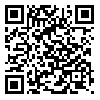Volume 3, Issue 4 (12-2014)
JCP 2014, 3(4): 487-497 |
Back to browse issues page
Download citation:
BibTeX | RIS | EndNote | Medlars | ProCite | Reference Manager | RefWorks
Send citation to:



BibTeX | RIS | EndNote | Medlars | ProCite | Reference Manager | RefWorks
Send citation to:
Farsi A, Kocheili F, Mossadegh M S, Rasekh A, Tavoosi M. Natural enemies of the currant lettuce aphid, Nasonovia ribisnigri (Mosely) (Hemiptera: Aphididae) and their population fluctuations in Ahvaz, Iran. JCP 2014; 3 (4) :487-497
URL: http://jcp.modares.ac.ir/article-3-2577-en.html
URL: http://jcp.modares.ac.ir/article-3-2577-en.html
1- Department of plant protection, faculty of Agriculture, Shahid Chamran University of Ahvaz, Ahvaz, Iran.
2- Department of plant protection, faculty of Agriculture, Shahid Chamran University of Ahvaz, Ahvaz, Iran. University of Ahvaz
3- Agriculture and Natural Resources Research Center of Khuzestan-Ahvaz.
2- Department of plant protection, faculty of Agriculture, Shahid Chamran University of Ahvaz, Ahvaz, Iran. University of Ahvaz
3- Agriculture and Natural Resources Research Center of Khuzestan-Ahvaz.
Abstract: (6141 Views)
Nasonovia ribisnigri (Mosely) is one of the most important pests of the lettuce plant and it was reported for the first time in Ahvaz in 2008. In order to investigate the dominant species of its natural enemies and their population fluctuations, sample were taken arbitrarily from fifty plants twice a week during the growing season in 2010-2012. In this study, ten species of predators, three species of parasitoids and two species of hyperparasitoids were collected and identified. Hoverflies with a relative frequency of 55% were the dominant predators. Peaks of lacewings and subsequently ladybird beetles were more coincident with peaks of aphid population in mid-March in the first year of studies. But their densities in the second year were very low. Also, hoverflies and parasitoids were mainly observed in the high densities in late March-early April, in both years. Regression analysis indicated that populations of aphids were mainly affected by ladybird beetles and lacewings in the first year of study, as well as by ladybird beetles, hoverflies and parasitoids in the second year. Therefore, additional studies are required for further evaluation on the potential abilities of these natural enemies being a good candidates for the future biological control programs.
Keywords: Nasonovia ribisnigri, natural enemies, population fluctuation, multiple regressions, Biological control
Received: 2014/02/12 | Accepted: 2014/04/15 | Published: 2014/12/1
| Rights and permissions | |
 |
This work is licensed under a Creative Commons Attribution-NonCommercial 4.0 International License. |








